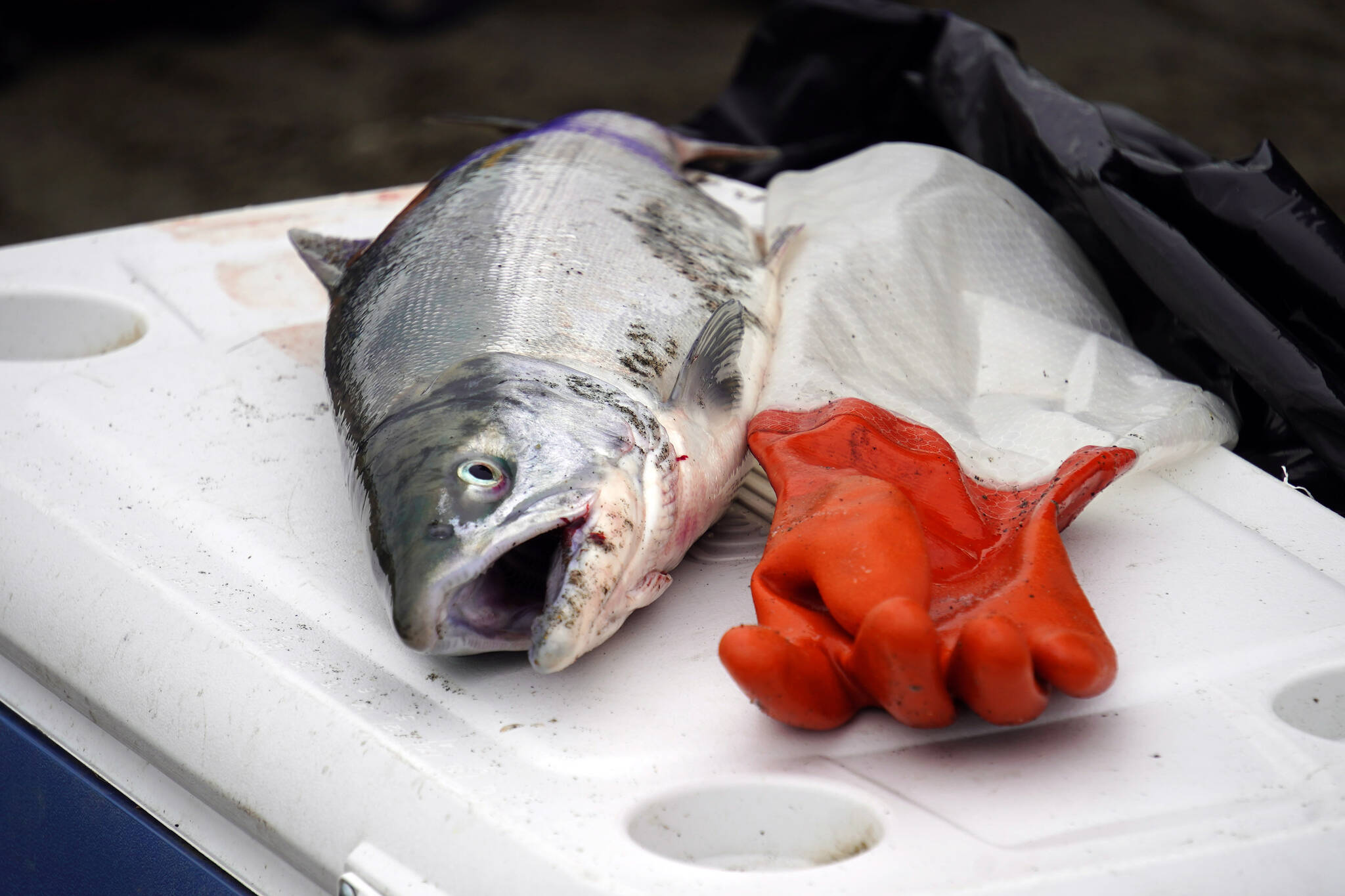Commercial fishers who operate in Cook Inlet may be allowed to harvest sockeye salmon using dipnets as soon as this summer, after unanimous action by the State Board of Fisheries added the gear type to fishing regulation.
The move by the board came as part of their Upper Cook Inlet Finfish meeting and followed other action that implemented new restrictions on commercial fisheries. Interest in exploring new gear types for the commercial fisheries to avoid harvesting king salmon was repeatedly expressed by the board and by members of the State Department of Fish and Game.
“Thinking outside of the box is the way of the future on this one,” said board member Mike Wood during the meeting. “Whatever it takes to be able to allow there to be some selective harvest with no termination of kings on that beach, I’m all for it — any creativity that can happen there.”
A proposal allowing the use of dipnets is the only action the board approved during the meeting, but they also expressed interest in continuing a department study that explores the use of shallower set gillnets, as well as new exploration for the use of reef nets and beach seines.
“We are very interested in looking for different mechanisms whereby the setnet fishery can operate in a manner that harvests sockeye but reduces the king salmon intercept,” said Fish and Game Commissioner Doug Vincent-Lang.
The proposal approved by the board, amended from a submission by Chris Little, is included as part of the Kenai River Late-Run King Salmon stock of concern action plan passed by the board earlier in the meeting, and would be removed from regulation if the stock were delisted as a stock of management concern.
Before dipnets can see use in Cook Inlet commercial fisheries, the Commercial Fisheries Entry Commission will also need to approve the action and include the gear type in commercial fishing permits. The board said this move will “get the ball rolling.” No timeline was defined for such an approval.
The proposal passed says that from June 20 to July 31, commercial set gillnet permit holders in Cook Inlet can use dipnets as an alternative gear type. Openings “may” occur outside of the specified openings described in the action plan — which require a projection of more than 14,250 large king salmon — via an emergency order by the department. No more than three 12-hour openings will be allowed each week.
There was board discussion about whether that number of openings would be too low — but the board agreed on that number based on concerns over the unquantified impact of such a radical change in methodology within the fishery.
While fishing with dipnets, up to four nets can be used per permit holder. Those nets must be operated by that holder or by licensed crew members. Fishing can occur from a vessel or from shore sites leased for commercial operation. The board noted that those fishing don’t necessarily need to be the lease holder of the site they’re fishing on.
The original proposal included a restriction on the length of vessels used for commercial dipnetting, but the substituted language used by the board dropped that consideration.
Board member Märit Carlson-Van Dort noted that the language in the proposal that was ultimately passed prohibits retention of king and silver salmon. The broader action plan requires that commercially harvested king salmon be turned over to processors for sampling by the department. Because the proposal prohibits retention, it would be at odds with that policy and could result in unreported mortality, she said.
An edit intended to allow the possibility for commercial dipnetters to release healthy king salmon while still reporting mortality in line with the action plan will be included as a “technical fix,” Forrest Bowers from the Division of Commercial Fisheries said.
Gary Hollier, who’s fished the east side setnet fishery for decades, told the board he’s “not real crazy” about the idea of fishing with dipnets rather than traditional setnets. But, with the conditions of the action plan, he doesn’t expect to otherwise see any opportunity to harvest, and said his family is ready to go “all in.”
Gene Sandone, who fishes in the Matanuska-Susitna region, said he’s seen dipnets successfully implemented in the Yukon River. When the opportunity was first opened roughly 10 years ago, he said that only two people were out — but now people fish with the dipnets “every day.”
“It was very poor in comparison to a gill net, but it gave those people the opportunity to fish and to make some money,” he said.
For more information about the Board of Fisheries, including proposals, reports and audio from the Upper Cook Inlet Finfish meeting, visit adfg.alaska.gov.
Reach reporter Jake Dye at jacob.dye@peninsulaclarion.com.


